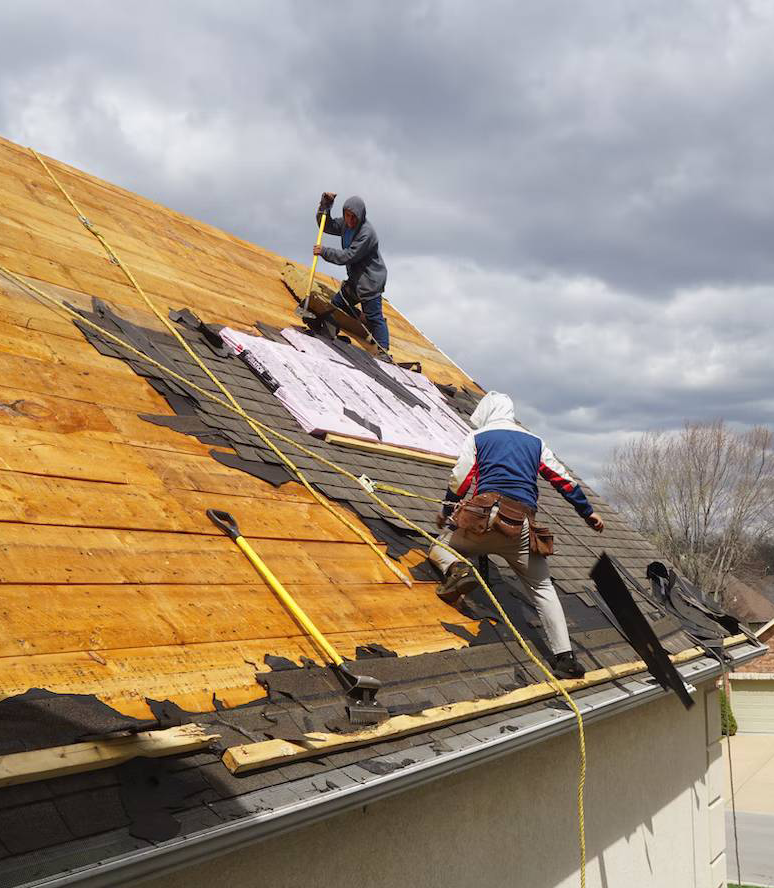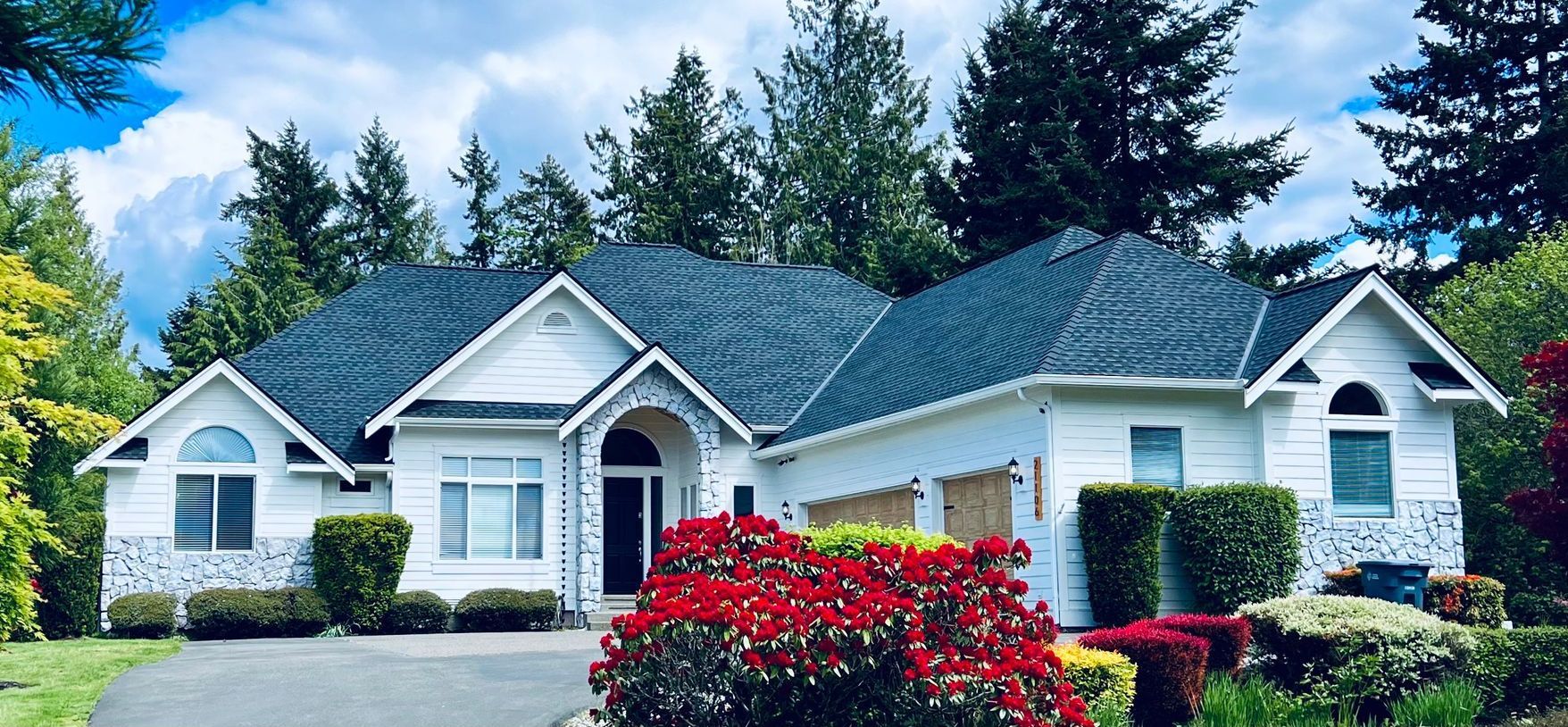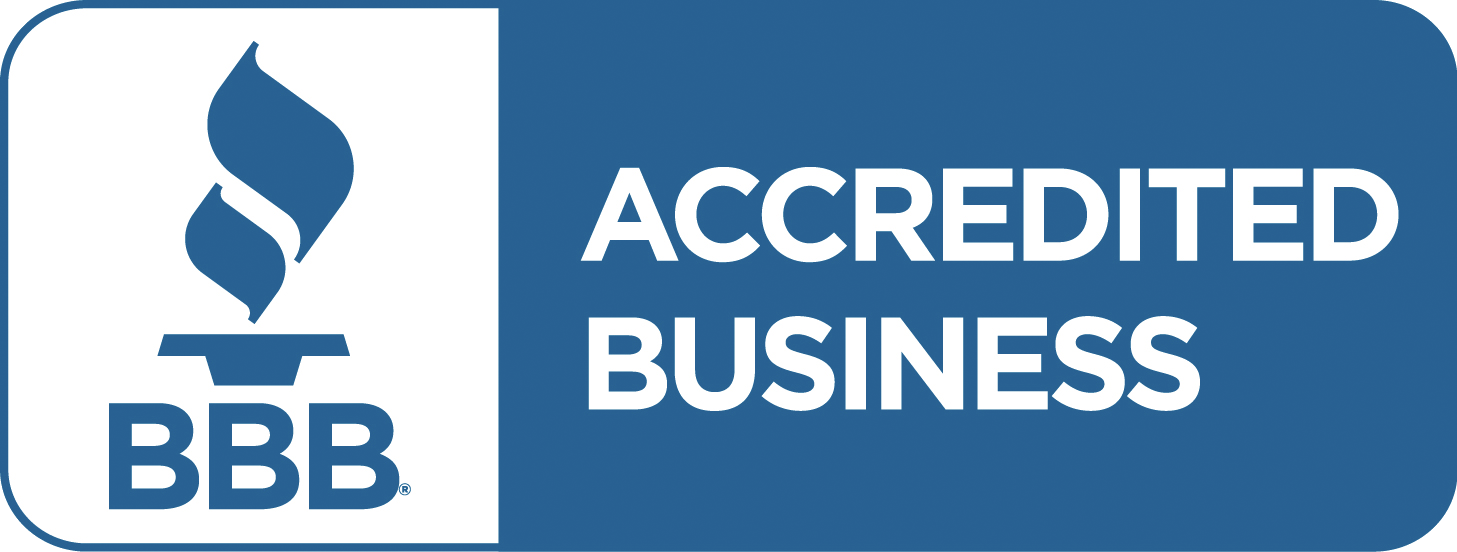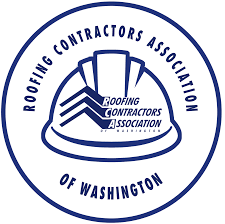Quality, Professional Residential Roof Replacement

Roof Replacement
Skye Exteriors offers reliable and professional residential roof repair services to homeowners who must address roof issues. Whether it's a leak, damage from storms, or general wear and tear, our team of experts are dedicated to providing high-quality solutions to keep your home safe and protected. At Skye Exteriors we take pride in attention to detail and use of top-quality materials to ensure that every repair job is done right the first time. We are committed to delivering exceptional customer service and making the repair process as stress-free as possible for our clients.
Skye Exteriors prides itself on its attention to detail and excellent customer service, ensuring that every homeowner is completely satisfied with the final result.
Roof Replacement: A Comprehensive Guide to Costs, Contractors, and DIY Options
Roof replacement is not as daunting as it may seem. With proper insight into the signs of roof deterioration such as visible light in the attic or cracked shingles, you will know exactly when your roof needs replacing. Furthermore, finding a reliable contractor is an achievable task with some research. However, the surprising twist here is that roof replacements can also be a do-it-yourself project if you're willing to invest some time and effort into learning. After all, understanding is half the battle won when it comes to home improvements. As we delve into this topic further, keep an eye out for indicators of roof deterioration.
The average cost of roof replacement in the US ranges from $5,353 to $10,686. For most homeowners opting for asphalt shingle installations on a 1,500 square foot roof, the typical expenditure is around $8,143. Costs can vary based on location, material selection, and project requirements.
Recognizing Necessary Roof Replacement
When it comes to our homes, sometimes we let things go until they're really bad. But with your roof, you have to stay on top of things—pun intended. It's important to recognize the signs that show your roof is past its prime.
Signs of Roof Deterioration
Homeowners become skilled at spotting the signs of roof wear and tear. When you're outside, take a look at your shingles. Are any of them curling up or missing? These are clear indicators that your roof may need attention. Additionally, cracked or damaged roofing materials should be addressed promptly to prevent further damage to your home.
Sometimes, these signs may seem insignificant but zooming in on these details can save you from much larger headaches down the road.
Age of the Roof
Consider the age of your roof. Most traditional asphalt shingle roofs last around 20-25 years. If you've lived in your home for more than a couple of decades and haven't replaced your roof, chances are, it's time.
Be cautious and proactive if your roof is nearing this milestone or has surpassed it. Don't wait until you're facing significant issues caused by an aging roof. Addressing the situation before it becomes dire will save you both stress and money in the long run.
Internal Inspection
Taking a peek inside can also offer valuable insights into the state of your roof. Water stains on ceilings are a telltale sign that water is seeping in through worn-out roofing materials. Another internal red flag is peeling paint—this could suggest that moisture from a damaged roof is seeping into your walls. Perhaps most concerning is the growth of mold, which signifies that there's likely excess moisture getting trapped in your home - an indication of potential leaks in your roof.
Catching these internal signs early can prevent structural damage to your home and protect your family from potential health hazards associated with mold growth.
Identifying the necessity for a roof replacement involves paying close attention to exterior and interior indicators that collectively signal the deterioration of your roof over time.
Materials for Roof Replacement
Choosing the right roofing material is a crucial decision as it significantly impacts your home’s longevity and appearance. Each material brings its own advantages and considerations, so let's explore some of the most popular options.
Asphalt Shingles
Let's start with asphalt shingles, the most widely used roofing material in North America. These shingles are favored for being cost-effective, easy to install, and coming in a wide range of styles and colors. They offer reliable protection and are fairly low-maintenance, making them an attractive choice for many homeowners. With proper installation and maintenance, asphalt shingles can provide excellent durability and protection from the elements.
Key Points to Consider:
- Affordability: Budget-friendly while providing good performance.
- Variety: Available in a plethora of styles and colors that match desired aesthetics.
- Easy Installation: Praised by roofing contractors for their ease of installation, helping minimize labor costs.
- Durability: With proper upkeep, these shingles can protect your home for many years.
Metal Roofing
Next up, we have metal roofing, known for its remarkable durability and longevity. The option of standing seam roofing or metal shingles offers homeowners versatile choices to suit their preferences. Metal roofs are weather-resistant and can be an energy-efficient solution as they reflect solar radiant heat, potentially reducing cooling costs during hot weather.
Key Points to Consider:
- Longevity: Properly installed metal roofs can last 50 years or more, outperforming many other materials.
- Variety: Different styles and finishes make metal roofing appealing to those looking for versatility.
- Sustainability: Typically contains a significant amount of recycled content and is fully recyclable at the end of its long life.
- Weather Resistance: Excellent in harsh weather conditions and can effectively shed rain and snow.
Wood Shingles
Wooden shingles offer a more rustic and natural appearance compared to other materials. Homeowners often choose wood shingles for their unique aesthetic appeal as they age gracefully over time. It's important to note that wood shingles require diligent maintenance to prevent issues such as mold, rot, and insect infestations. However, when properly cared for, they can provide an inviting and classic look to your home.
Key Points to Consider:
- Appearance: Develop a charming silver-gray patina over time, adding character to a home.
- Sustainability: Uniquely eco-friendly due to their biodegradability when responsibly sourced.
- Maintenance: Regular inspections and treatments are essential to prevent decay and maintain integrity.
- Insulation: Wood offers natural insulation properties, helping regulate indoor temperatures efficiently.
Slate and Tile
Lastly, we have slate and tile roofing, known for their elegant appearance and exceptional durability. While both materials offer superior longevity when installed correctly, it's important to consider their weight and potential need for additional roof reinforcement. Homeowners opt for slate or tile roofing when they seek a timeless aesthetic coupled with unbeatable resilience against harsh weather conditions.
Key Points to Consider:
- Durability: Boast an exceptionally long lifespan, often surpassing 100 years when properly maintained.
- Elegance: Exude a luxurious charm that enhances the visual appeal of any property.
- Weight Considerations: May require additional structural support during installation or renovation.
- Maintenance: Regular inspections can help identify minor issues before they escalate, ensuring the preservation of your investment.
Understanding these distinct roofing materials will set you on the right path toward making an informed decision about your roof replacement.
Informed decisions often require solid foundations—both literally in terms of homes and figuratively when selecting service providers. In our next section, we'll unpack the key considerations when embarking on the search for a reliable contractor who will seamlessly bring your vision to life.
Finding a Reliable Contractor
Replacing a roof is no small task, so finding a reliable and experienced contractor is crucial. They will ensure the work is done professionally and to a high standard. Here are key steps to consider when finding the right roofing contractor for your project.
Research and Reviews
When it comes to finding a reliable contractor, doing your homework goes a long way. Look for local roofing contractors with a strong reputation and positive customer reviews on platforms such as Google, Yelp, or industry-specific websites. Positive reviews and high ratings indicate that customers have been happy with the service they received, reflecting the quality of workmanship and customer satisfaction.
Do thorough research into the background of each contractor that catches your eye. Consider their experience, specialization, and community reputation. A well-established company with a proven track record will give you confidence in their ability to handle your roof replacement.
Licensing and Insurance
It's crucial to ensure that the roofing contractor you choose is licensed, bonded, and insured. This provides protection for you as a homeowner in the event of any accidents or damage during the roof replacement process. Before hiring any contractor, be sure to ask for proof of these credentials. A reputable contractor will have no qualms about providing this information upfront so that you can be assured of their legitimacy.
Portfolio and References
A contractor's portfolio speaks volumes about their capabilities and craftsmanship. Ask to review their prior work, paying close attention to projects similar to what you're looking for. Additionally, request references from previous clients; speaking with those who have worked with the contractor before will give you insight into their work quality, reliability, and professionalism.
Imagine talking to a homeowner who had her roof replaced by the same contractor you are considering. She tells you about her positive experience with them: how they communicated clearly, finished the project on time, and left her property spotless. This firsthand account can help you gauge what it's like to work with that specific contractor.
Understanding the importance of thoroughly vetting potential contractors will ultimately lead to peace of mind during your roof replacement project. By doing so, you'll be better positioned to make an informed decision and select a contractor who meets your specific needs while delivering exceptional results.
Ensuring that your roofing contractor is reliable and experienced is just one piece of the puzzle when replacing your roof. The next step is understanding the costs involved in a comprehensive roof replacement project.
Cost Estimation for Roof Replacement
Understanding the cost of a roof replacement is critical for planning and decision-making. The national average cost for a roof replacement falls between $5,353 and $10,686. However, this range can vary based on factors such as geographical location, choice of roofing materials, and project requirements.
Let's break down these costs further. When thinking about the price tag of a roof replacement, it's essential to consider various contributing factors including materials, labor, roof size, underlayment, removal of the old roof, and necessary repairs to the roof deck or structure. Each of these elements plays a significant role in determining the overall expense.
For instance, the choice of materials will heavily impact the cost. Asphalt shingles are more budget-friendly, whereas metal roofing is more durable but comes at a higher initial cost. Additionally, labor costs may vary based on location and project complexity.
Furthermore, underlayment—a protective layer beneath the visible roofing material—is another contributor to overall expenses. Proper underlayment installation is pivotal for a well-performing roof and safeguards against potential water damage over time. Removal of an existing roof can also add to the total cost, especially if there are multiple layers that need to be taken off.
Return on Investment
It's imperative to focus on upfront costs, but equally vital to evaluate the long-term benefits and return on investment (ROI) associated with a roof replacement. While it entails a substantial initial investment, a new roof contributes to increased property value and energy efficiency. This means that over time, you may recoup some of the expenses through reduced energy bills and enhanced curb appeal should you decide to sell your home.
Considering ROI helps put the cost of a roof replacement into perspective—it's not just an expense but an investment in your home's future and your family's safety and comfort.
So when calculating the potential cost of replacing your roof, it's essential to carefully consider all these factors while also weighing the potential benefits and returns in terms of longevity and value enhancement.
In analyzing the costs associated with roof replacement, we've highlighted both immediate financial considerations as well as future gains through investments thoughtfully made in our homes’ infrastructure. Now let's explore some DIY options for those who have both budget constraints and a command over construction endeavors.
DIY Roof Replacement Options
Taking on a DIY roof replacement is a substantial endeavor that requires careful deliberation. Before you reach for your tool belt, it's crucial to understand both the potential hazards and the factors that may affect your decision to pursue this route.
While the idea of saving money by tackling a roof replacement on your own can be enticing, it's important to recognize the hazards involved. DIY roof replacement can be extremely dangerous, especially for those without prior experience or training in roofing. Climbing onto a roof can result in serious falls if proper precautions aren't taken, and there is also the risk of unfamiliarity with walking on a steep surface. Additionally, mishandling tools or materials can lead to injuries, making it essential to prioritize safety above all else.
Apart from personal safety, another critical factor to consider is how a DIY roof replacement may affect warranties. Many manufacturers offer warranties on their products, but these warranties can become void if incorrect installation or handling processes are used during a DIY project. This means that any issues further down the line might not be covered under warranty, potentially leading to higher costs for future repairs if problems arise.
Before diving into such a significant task, evaluate whether you possess the necessary expertise and safety precautions to ensure a successful outcome. If you don't have prior experience with roofing work or if you're unfamiliar with the specific requirements of your roofing material, it might be best to enlist professional help for this challenging project.
Small Repair Projects
On the other hand, small repair projects like fixing a few shingles may present more accessible DIY opportunities. With careful attention to safety measures including proper footwear, secure ladder usage, and harnesses when working at heights, homeowners may be able to effectively address minor issues without professional assistance.
For example, replacing damaged or missing shingles is relatively straightforward and can often be done without extensive experience in roofing installations. It's important to focus on small areas of damage rather than attempting comprehensive replacements as these localized issues are generally less complex and require fewer specialized skills.
However, regardless of the size of the repair project, it's crucial to prioritize safety at all times. It's recommended to carefully read and follow safety guidelines provided by manufacturers for any products being installed or replaced. This includes using appropriate tools and equipment and ensuring a stable work environment free from potential hazards.
With these risk factors and considerations laid out plainly, while some smaller repair projects can be undertaken with caution and care, full-scale DIY roof replacement demands expertise and conscious risk evaluation before taking that leap. Safety should always come first when handling any aspect of roof maintenance or repair.
Navigating Roof Warranties
When you invest in a new roof, it’s not just about the materials and installation, but also about the warranties that come with them. There are typically two types of warranties that you'll need to navigate: the manufacturer warranty and the contractor workmanship warranty. Understanding these warranties is crucial because they offer protection for your investment and ensure that any issues are handled as efficiently as possible.
Manufacturer Warranties
Manufacturer warranties cover the materials used in your roof. They outline what is and isn't covered if the materials fail or don't perform as expected. It's important to thoroughly understand the terms and duration of these warranties, including specific conditions that might void the warranty. For instance, many manufacturer warranties require strict adherence to installation guidelines. Any deviation from these guidelines could void the warranty, leaving you solely responsible for any issues that arise.
To put it simply, if high-quality materials are used but the specific installation guidelines outlined by the manufacturer aren't followed, they will not be accountable for any issues that crop up. Therefore, meticulous attention to detail during installation is pivotal to ensuring full warranty coverage.
Contractor Workmanship Warranty
On another front, there's also the contractor workmanship warranty which reputable contractors often offer. This type of warranty specifically covers any installation-related issues that may arise post-project completion.
This means that reputable contractors stand behind their work and are willing to address any issues caused by errors in installation. It's crucial to thoroughly understand the details of this warranty, including its duration and what it covers. A solid workmanship warranty offers peace of mind because it reassures you that any potential issues resulting from improper installation will be taken care of by the contractor.
For example, if there are leaks due to poor installation, a good workmanship warranty will ensure that those issues are fixed promptly at no extra cost to you.
Understanding these warranties empowers you as a homeowner and ensures that you're fully informed when discussing options with roofing contractors. It's also worth noting that additional extended warranties might be available through your contractor or directly from the manufacturer which can provide added peace of mind for years to come.
Understanding roof warranties can make a significant difference in protecting your investment and ensuring the best outcome for your roofing project. If you're ready to discuss your roofing needs with a reliable and professional contractor, visit Skye Exteriors LLC today.



